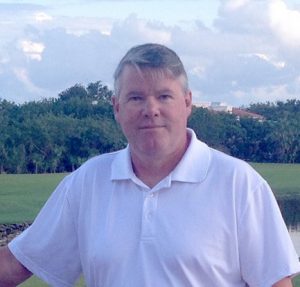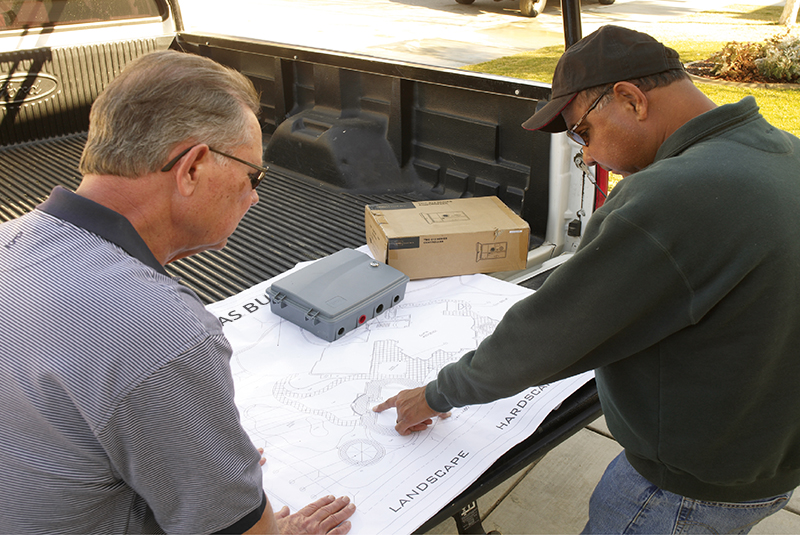Over the past couple months, we’ve shared several resources about troubleshooting 2-wire irrigation systems. These resources have included tips for troubleshooting with a multimeter, manufacturer-specific guides, and access to Central’s Two-Wired Decoder Hotline. This year in particular, has been a rough year and our two-wire experts have been in the field helping to troubleshoot and solve issues for our customers.
We thought this was a perfect opportunity to share some of hands-on-experience and recommendations to make two-wire troubleshooting easier and faster. We’ve asked Doug Armour, Central’s Commercial Irrigation Technical Manager, to share his feedback on how to ensure your service call doesn’t turn into a multiple-day problem. Doug has logged countless hours in the field this season and these are the tips he follows when on the job site.
From Doug:
I’ve spent much of the last two months traveling to various job sites to help our customers solve issues with irrigation systems that have experienced problems over time due to degradation or faults in the field wiring. In past articles, I’ve covered various testing and manufacturer-specific resources you can use to identify an issue. These are very effective tools; however, these resources can only work once you have identified the specific wire locations and where the systems were run.
This isn’t an issue if you were the one who installed the system, but many contractors take over sites where they did not do the installation. This creates unique challenges for troubleshooting or upgrading the system. You may not know everything you need to know about a system such as dimensions and sizing, precise locations of wire runs, type of materials used including all valves, heads and other materials, and other system requirements. If you have access to the original design that helps but it’s not perfect. As we all know, plans change due to budgets or other unforeseen issues. If the installer did not keep an accurate list of changes this can create a ton of extras for you: extra time, extra resources, extra headaches. We’re always looking for ways to help you and your team be more efficient.
That’s where as-built drawings come in. These record drawings of installed systems are vital for fast and easy maintenance and troubleshooting.
As-Built Drawings
Most of you are already familiar with as-built drawing, but as a reminder these drawings show the actual location of the installed irrigation system and components versus the original schematic plan. As I mentioned, changes are inevitable because of site conditions and all deviations should be noted and measured.
An architect or a designer who puts together the original design plan will generally have limited involvement with the day-today of the construction. This means that typically, the contractor will be responsible for keeping an accurate list of changes to the original plans. So, it’s important to know what you need to keep track of.
When drawing the as-built, it is important to include:
- A scale for the drawing with a legend of the equipment and a North arrow. This allows for accurate mapping of the project.
- Specific locations of the following project components. Without these, you’ll be “shooting in the dark”. By having the following components accurately identified on the as-built drawing will take the guess work out of troubleshooting.
- The location of the point of connection and type of backflow device
- The location of the controller(s) and sensor(s)
- The location of the pipes and their sizes
- The location of the valves, their sizes and station number or decoder address
- The location of all the wire runs and all splices
- The location of the sprinklers and specify types
- The location of all sleeves
Once the job is complete and all changes have been identified, the architect or designer can create the final as-built drawing. If you do not have access to an architect or designer, Central offers a variety of design services with Certified Irrigation Designers including certified design, take-offs, bid package preparation, as-built drawings, job leads, and more. Let us know if you need help with a design.
The advantage of having an as-built drawing is faster repairs and reduced repair costs.
If you don’t have an as-built drawing for a specific job-site, start making one! All irrigation systems should have as-built drawings but for two-wire systems, it is extremely important. In order to effectively troubleshoot a two-wire system you need to know where the two-wire path(s) run, the location of all splices, and decoder numbers or addresses.
Turn your service calls into hours not days.
As we’ve mentioned in previous articles, troubleshooting can be very frustrating and not always straight forward. A system might have more than one issue or locating what the exact issue is can be challenging. Rely on Central to help, whether it’s questions about troubleshooting or installation, showing you how to use specific equipment, or sharing insight and recommendations on the newest technologies. We stay at the leading edge of the industry and we’re ready to help you grow!
About Doug Armour
 Doug Armour, Central’s Commercial Irrigation Technical Manager, is certified by the Irrigation Association as a Landscape Irrigation Water Manager, in addition he holds certifications with Hunter and Rain Bird, and has been factory trained with Tucor. He is an excellent resource for any technical questions about irrigation systems and for troubleshooting systems that are not working properly.
Doug Armour, Central’s Commercial Irrigation Technical Manager, is certified by the Irrigation Association as a Landscape Irrigation Water Manager, in addition he holds certifications with Hunter and Rain Bird, and has been factory trained with Tucor. He is an excellent resource for any technical questions about irrigation systems and for troubleshooting systems that are not working properly.

